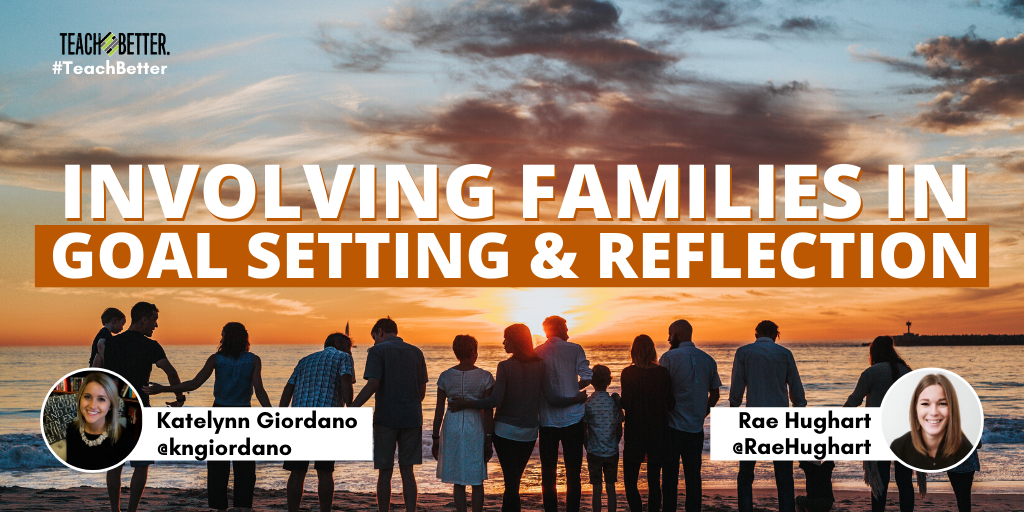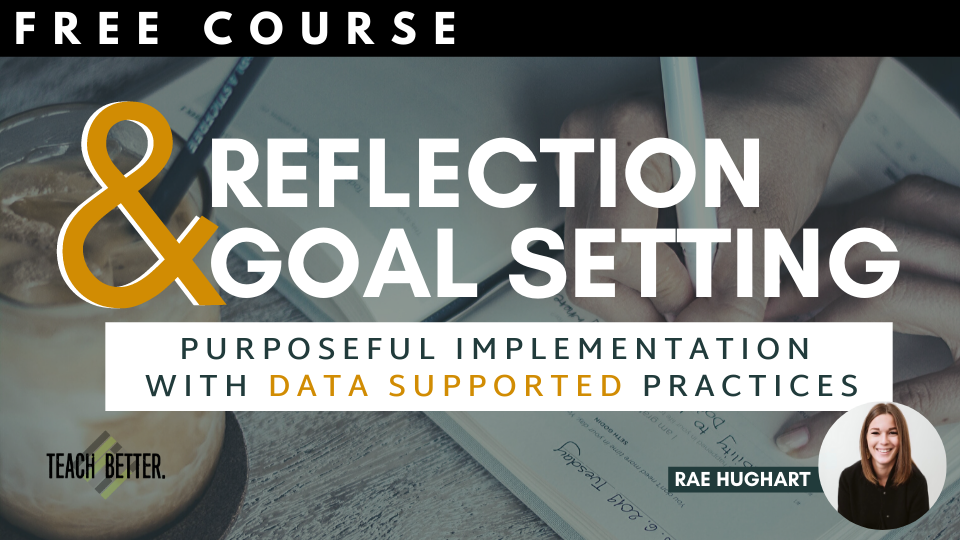TL;DR:
- The value of family involvement in goal setting and reflection.
- A low-tech method for involving families.
- A technology-based reflection tool for involvement of families.
When it comes to goal setting, it’s important that we make it relevant and authentic for our students. Beyond that, we also have to involve their families.
“It takes a village to raise a child.”
That phrase is so common, and for good reason. It truly does take a community to help our students (or children) grow into responsible, informed citizens.
Helping our learners set goals and reflect on their progress is a vital part of this growth and, like everything else, takes a supportive community. The first and most important community that a child has is their family.
So it only makes sense that we involve them in this process.
There are a variety of different ways to involve families in the goal setting and reflection process. It’s important to find one that works for you, your students, and their families. In our classrooms, we have both found ways to involve students’ families in this process, and it’s been greatly successful so far!
Whether you choose a web-based tool or you go low tech, the vital part is that you are having students reflect deeply and consistently. Click To TweetLow-Tech, High Involvement Goal Setting & Reflection
In my (Katelynn’s) class, our goal setting and reflection tool is very low-tech — pencil and paper. Each quarter, my students use this goal setting sheet to set intentions for the coming weeks.
We discuss realistic, attainable goals that are focused on learning. I set a few ground rules: no goals about grades, we’re focused on ELA skills, and ensure it is something we can reasonably accomplish in a quarter. My students take it from there.
The second side of the goal setting sheet is for families. I include a little blurb at the top that encourages them to focus on goals for their student’s learning, not on grades. This usually sparks some questions, but I love that. It opens the door to a conversation about their student, one that is entirely focused on progress. It’s a beautiful thing.
At the end of the quarter, I pass back the goal setting sheets. My students take a moment to look back on the goal they wrote and consider the progress they’ve made towards it. We then fill out the reflection sheet.
Students write about the steps they’ve taken and what they’ve accomplished. They consider whether they’ve been successful or if they need to revisit the same goal in the next quarter. It’s a powerful process for reflection because it focuses their thinking. And I believe that having them put it into words helps them reflect more deeply.
The second side of the reflection sheet goes home to families. They spend some time and consider their child’s growth and progress. Many families share that it sparks a great conversation at home about learning and effort and sometimes about behavior at school.
I love this aspect of the tool because I hear more often from families this way, and it helps them have a conversation with their student about my class.
Technology for Goal Setting & Reflections
In my (Rae) classroom, I dabbled with goal setting and reflection in 100 different ways. First, I went low tech and copied guided sheets for students to write on each day. However, I ran into so many hurdles with this system. Some of this was due to my uneducated implementation as a newbie to this whole idea. However, other hurdles came with the choices of my students.
My least favorite question each day was, “Mrs Hughart, what is the date?”
Every time, I would look at them in disbelief as I pointed to the top corner of my white board. This saga seemed to occur daily. Finally, I questioned if this was really the battle I wanted to fight each day. With access to technology, there had to be a better way!
As I began my thesis research during my masters program, I began evaluating the effect of the medium students chose to goal set and reflect in. I tested whether the medium impacted student success in producing a sound evaluation.
I wondered if I provided my students choice in the process if they would focus less on “the date” and more on the actual evaluation of their work.
My research definitely emphasized my hypothesis – there was a dramatic effect!
So here is what I love about the web-based platform that changed my student goal setting and reflection forever:
- Students have their own profile that is shared with me (the teacher) and any stakeholder(s) you choose!
- Students choose from 6 different mediums to reflect on including video, audio, typing, drawing, attaching a link, & more!
The benefit is that any attached stakeholder to the account gets an update right on their phone with a submission is added from their student. This provides a portal to their student’s learning each and every day. Family involvement in goal setting and reflection is baked right in to the tool and requires nothing extra from me or my students.
Choose Your Tool
In some cases, using technology and video can be amazing, but in others, your families may not have access. Other times, you and your students might be hyper-focused on the logistics, and technology can alleviate (or eliminate) the unnecessary distraction.
Whether you choose a web-based tool or you go low tech, the vital part is that you are having students reflect deeply and consistently. That you are cultivating metacognition in your students. That in your classroom, they are focused on their growth.
Because that’s really what it’s all about.
[scroll down to keep reading]About Rae Hughart
Rae Hughart is a Middle-Level Math and Writing Educator in Illinois, the Director of Training and Development for the Teach Better Team, and co-author of the Teach Better book. In 2017, Rae was honored with the Illinois State University Outstanding Young Alumni Award – inducting her into the University Hall of Fame. In 2018, Rae was honored again by the Henry Ford Innovator Award for her work within educator’s communities to build unity between local businesses and schools. Rae is also a member of the Teach Better Speakers Network.
About Katelynn Giordano
Katelynn Giordano is a Middle Level Language Arts Educator in Illinois and Digital Content Editor for the Teach Better Team. She writes on her blog, Curriculum Coffee, and for the Teachers on Fire magazine.
In 2019, Katelynn presented information on action research in the classroom with a team at the National Council of Teachers of English Convention in Baltimore.
Katelynn is a dynamic educator who is passionate about student voice and empowerment, promoting equity, and valuing teachers as professionals.
Katelynn is also a member of the Teach Better Speakers Network.





